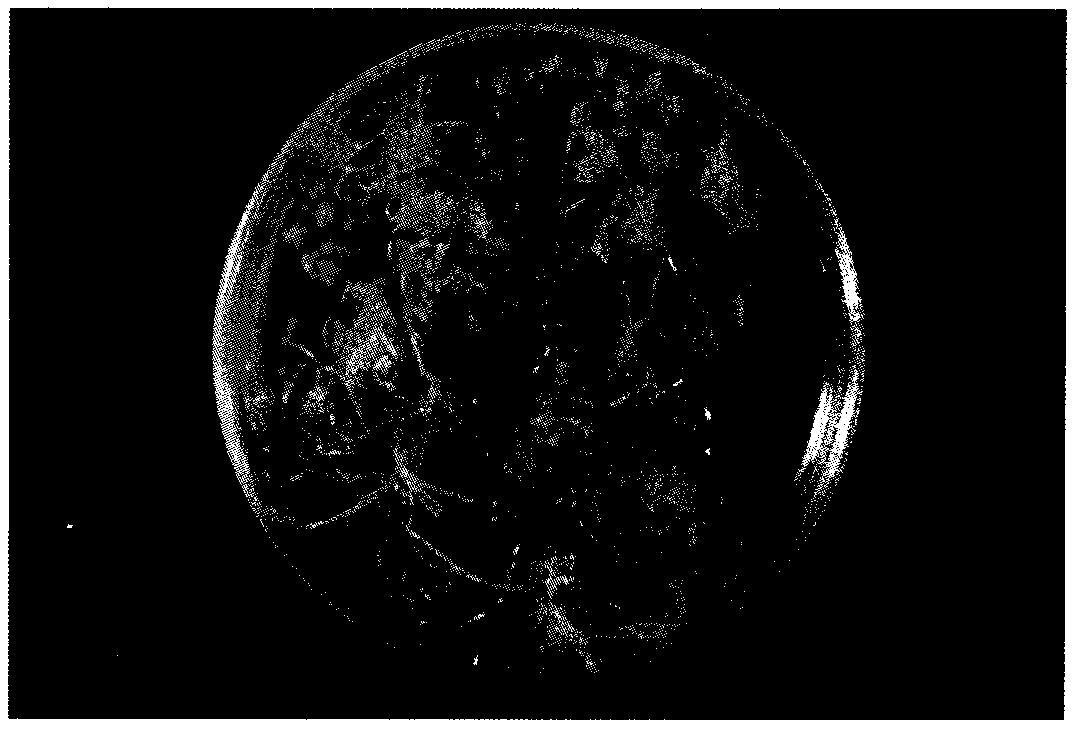Roegneria kamoji mature embryo callus induction and regeneration culture method
A technology of callus induction and culture method, which is applied in the biological field, can solve the problems that explants cannot be obtained at any time throughout the year, the time of material collection is limited by the growth period, and it is not conducive to large-scale expansion. The effect of reducing the difficulty of operation and inhibiting growth
- Summary
- Abstract
- Description
- Claims
- Application Information
AI Technical Summary
Problems solved by technology
Method used
Image
Examples
Embodiment 1
[0024] The culture method for the callus induction and regeneration of the mature embryo callus of E. gondii, comprising the following steps: (1) disinfection and sterilization of explants, (2) cultivation of induced callus, (3) differentiation of callus Cultivate, (4) rooting culture of induced differentiation buds, (5) transplanting culture; wherein,
[0025] (1) Disinfection and sterilization treatment of explants: select the seeds of Esperia sativa with full particles and no damage by diseases and insect pests, remove the lemma of the seeds of Esperia safranata, and then place the seeds of Esperia safranii in ethanol with a mass concentration of 70%. 30s, then rinsed 3 times with sterile distilled water to obtain pretreated seeds; in (1) the disinfection and sterilization of explants, the disinfectant is added at a mass concentration of 3% calcium hypochlorite and the volume percentage is ≤ 1% The mixed solution prepared by Tween80; the pretreated seeds were soaked in seed...
Embodiment 2
[0032]The culture method for the callus induction and regeneration of the mature embryo callus of E. gondii, comprising the following steps: (1) disinfection and sterilization of explants, (2) cultivation of induced callus, (3) differentiation of callus Cultivate, (4) rooting culture of induced differentiation buds, (5) transplanting culture; wherein,
[0033] (1) Disinfection and sterilization treatment of explants: select the seeds of Esperia sativa with full particles and no damage by diseases and insect pests, remove the lemma of the seeds of Esperia safranata, and then place the seeds of Esperia safranii in ethanol with a mass concentration of 70%. 50s, rinse 4 times with sterile distilled water again, obtain pretreatment seed; The mixed solution prepared by Tween80; the pretreated seeds were soaked in the seed disinfectant for 2.2h, and after the disinfection was finished, they were washed 4 times with sterile distilled water to obtain the sterilized seeds; the sterilize...
Embodiment 3
[0040] The culture method for the callus induction and regeneration of the mature embryo callus of E. gondii, comprising the following steps: (1) disinfection and sterilization of explants, (2) cultivation of induced callus, (3) differentiation of callus Cultivate, (4) rooting culture of induced differentiation buds, (5) transplanting culture; wherein,
[0041] (1) Disinfection and sterilization treatment of explants: select the seeds of Esperia sativa with full particles and no damage by diseases and insect pests, remove the lemma of the seeds of Esperia safranata, and then place the seeds of Esperia safranii in ethanol with a mass concentration of 70%. 60s, rinse 5 times with aseptic distilled water again, obtain pretreatment seed; The mixed solution prepared by Tween80; the pretreated seeds were soaked in the seed disinfectant for 2.5h, and after the disinfection was finished, they were washed 5 times with sterile distilled water to obtain the sterilized seeds; the steriliz...
PUM
 Login to View More
Login to View More Abstract
Description
Claims
Application Information
 Login to View More
Login to View More - R&D
- Intellectual Property
- Life Sciences
- Materials
- Tech Scout
- Unparalleled Data Quality
- Higher Quality Content
- 60% Fewer Hallucinations
Browse by: Latest US Patents, China's latest patents, Technical Efficacy Thesaurus, Application Domain, Technology Topic, Popular Technical Reports.
© 2025 PatSnap. All rights reserved.Legal|Privacy policy|Modern Slavery Act Transparency Statement|Sitemap|About US| Contact US: help@patsnap.com



